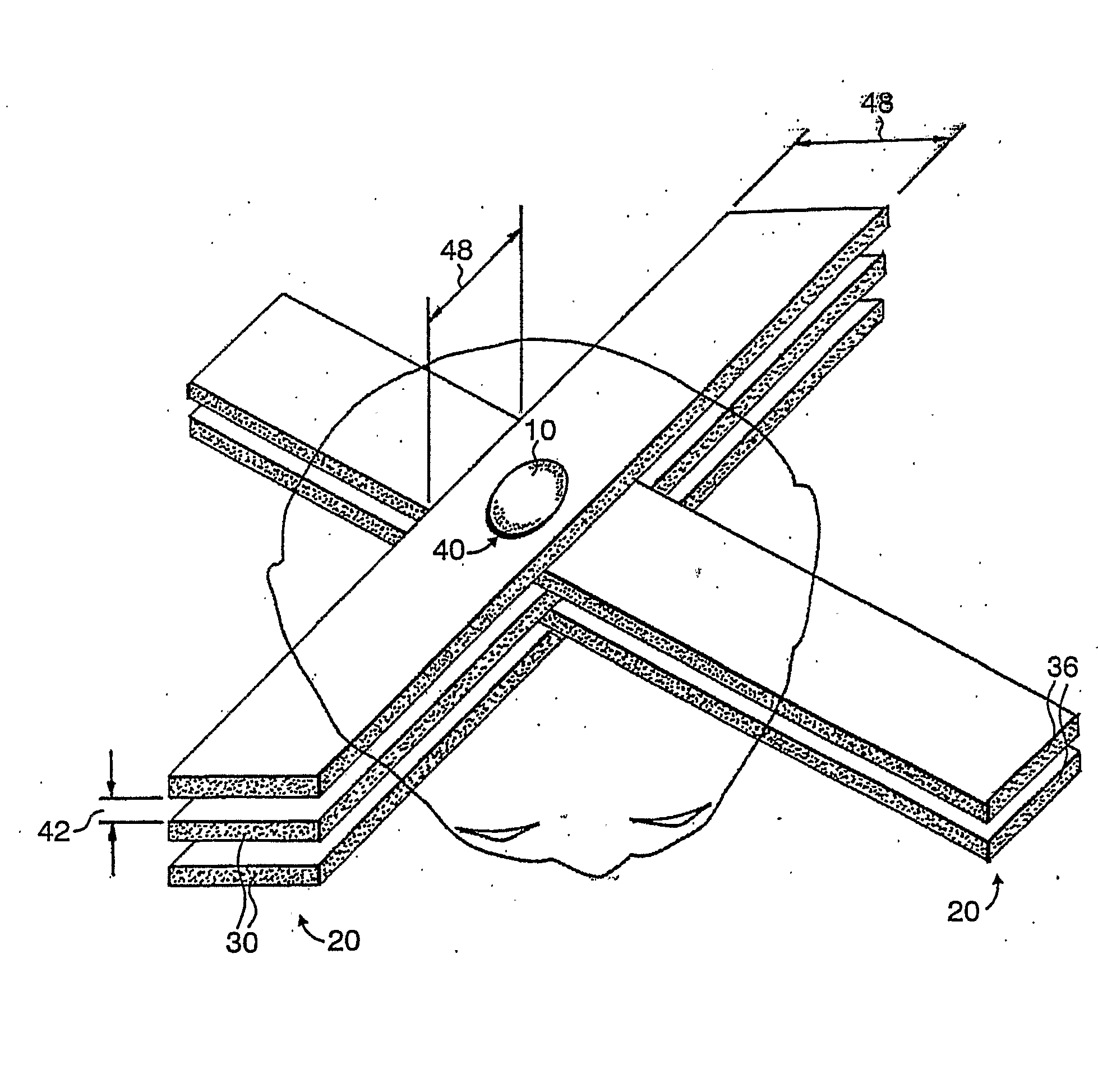Methods for Implementing Microbeam Radiation Therapy
- Summary
- Abstract
- Description
- Claims
- Application Information
AI Technical Summary
Benefits of technology
Problems solved by technology
Method used
Image
Examples
example 1
[0223]The following study was carried out at the National Synchrotron Light Source (NSLS), Brookhaven National Laboratory, Upton, N.Y., 11973. The results show the efficacy of gold nanoparticles combined with BIMRT. Mice with subcutaneous murine mammary carcinoma tumor EMT-6 tumor inoculated behind their neck were treated with the BIMRT of the present invention. The microbeam arrays had a 0.68 millimeters (mm) beam thickness and 1.36 mm center-to-center beam spacing, i.e., 0.68 mm inter-beam spacing. The gold nanoparticles used in the study were about 1.9 nm in diameter. At the ninth day of inoculation, when the tumor sizes averaged about 100 mm3, the mice were randomized in five groups of seven (7) mice each for the following treatments: Group A: 55 Gy BIMRT; Group B: 55 Gy broad beams (bidirectional, 2×27.5 Gy); Group C: 35 Gy BIMRT; Group D: 35 Gy BIMRT with gold nanoparticles; and Group E: Unirradiated controls. The gold nanoparticles, 0.2 ml in volume, were injected via the tai...
example 2
[0226]The major challenges in the use of x-ray tubes for microbeam radiation therapy are the divergence of the beams of most x-ray sources (with the exception of synchrotron sources) in the direction perpendicular to the microplanar beams, and the relatively larger source spot size. To optimize the dose radiation profile of the microbeams using conventional x-ray tubes, it is preferable to use a thick beam of about 0.7 mm. In addition, irradiation using a single microplanar beam at a time is also preferable, as demonstrated in the following example.
[0227]In this example, the radiation source is an x-ray tube with a source spot size of 0.4 mm in the direction perpendicular to the planes of the microbeams. The source is positioned 1 meter away from the slit that forms the microplanar beam. The slit is positioned 25 cm from the center of the target. The beam's thickness is 0.7 mm, leading to a nominal beam spacing on-center of 1.4 mm (i.e., inter-beam spacing of 700 microns). The targe...
PUM
 Login to View More
Login to View More Abstract
Description
Claims
Application Information
 Login to View More
Login to View More - R&D
- Intellectual Property
- Life Sciences
- Materials
- Tech Scout
- Unparalleled Data Quality
- Higher Quality Content
- 60% Fewer Hallucinations
Browse by: Latest US Patents, China's latest patents, Technical Efficacy Thesaurus, Application Domain, Technology Topic, Popular Technical Reports.
© 2025 PatSnap. All rights reserved.Legal|Privacy policy|Modern Slavery Act Transparency Statement|Sitemap|About US| Contact US: help@patsnap.com



